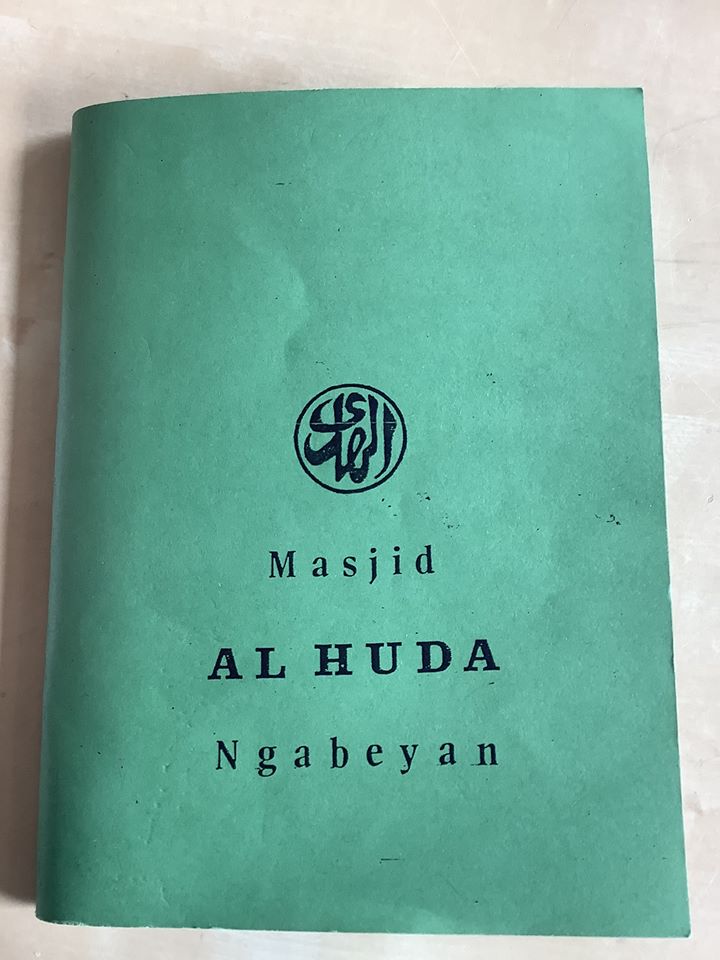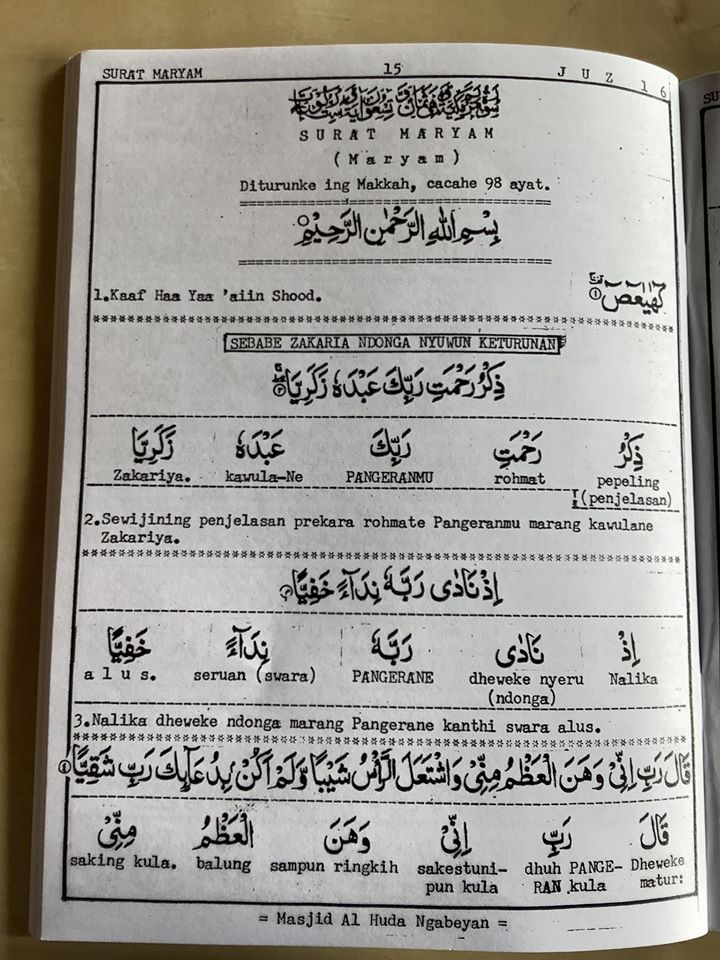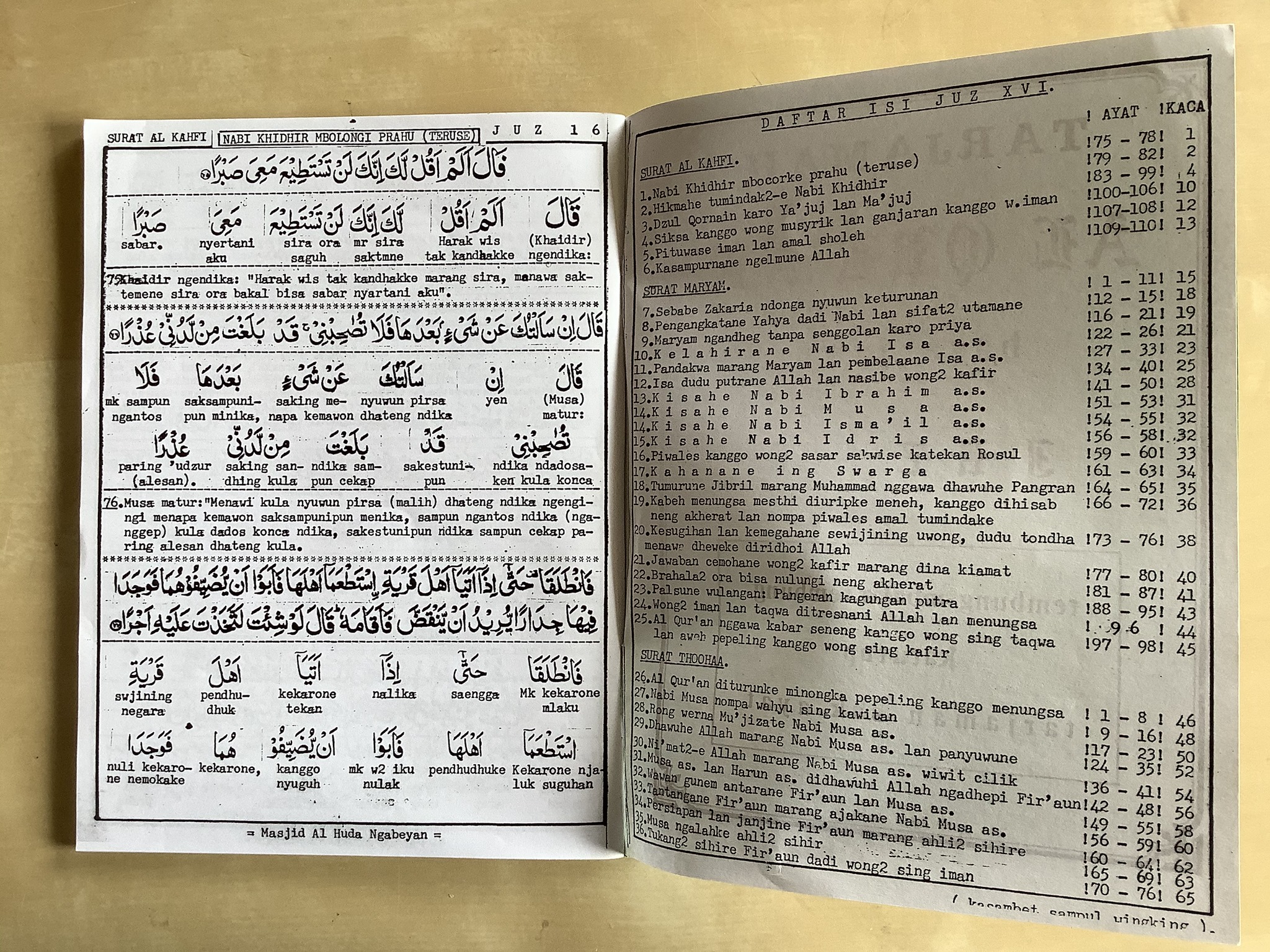Interlinear Qur’an translation is often considered a thing of the past – but in many contexts, it is alive and kicking! This points to fundamental differences between translations of the Bible and the Qur’an. Translations of the Bible are typically stand-alone texts that are meant to be read and studied by themselves. By contrast, interlinear translations function as a bridge between source text and target language and only work when the source text is present.
In Indonesia, interlinear translations are very common. We find them in glossy multicoloured printed Qur’ans, in textbooks for traditional Islamic schools, and in grey literature produced for use in mosques or study circles. They exist in the national language of Bahasa Indonesia as well as regional languages spoken by local communities.
The translation we present today comes as a series of photocopied booklets. They emerged from Qur’an teaching sessions conducted in a village mosque, Masjid al-Huda in Sleman near Yogyakarta in the South of Central Java. The translation was produced by combining typewritten text with cut and pasted copies of a calligraphed muṣḥaf. When it was given to me in 2018, the grandson of the scholar who authored it was still looking for a publisher, without success.
In actual fact, it contains two translations: a word-for-word interlinear translation followed by a rendering of the complete verse. This has parallels in the teaching tradition of Javanese Islamic schools, the pesantren, where the Qur’an is always taught with the aim of enabling the students to understand the Arabic source text semantically, grammatically, and syntactically.
The language of both translations is Javanese. Javanese is spoken by around 100 million people, predominantly on Java but also in diasporic communities such as Suriname. It is probably the largest language without official status in the world. Since the only official language in the Republic of Indonesia is Bahasa Indonesia, Javanese is not standardized and rarely used in public, official and/or written communication. This might also account for the lack of success in producing a printed version. The Indonesian book market is relatively small, given the size of the population, and religious texts in languages other than Bahasa Indonesia only sell when the authors are famous scholars or they are used as textbooks. Hence the existence of a substantial grey market of writings that address local communities.
Since Javanese is mostly used in private, informal and/or oral contexts, post-independence Javanese Qur’an translations are typically rooted in oral pedagogy. The Qur’an is explained word for word, and only thereafter a coherent meaning is provided. That the Masjid al-Huda translation is not directed at pesantren students but rather at a general audience is evident from the fact that no grammatical and syntactical explanations are given. In contrast to pesantren textbooks which clearly mark words as, for example, nouns, adverbs, relative pronouns or their referents, this is a relatively straightforward rendering of the meaning of individual words that is intelligible without any knowledge of Arabic grammar. Furthermore, it uses Latin script – which all literate speakers of Javanese are familiar with – as opposed to Arabic script (called pegon), which is taught to pesantren students.
The Masjid al-Huda translation thus clearly addresses lay readers, and yet it does not content itself with delivering a stand-alone Javanese text. While hardly any Biblical translation would expect lay readers to engage with the Greek or Hebrew source text, acquainting readers with the source text is precisely what the Masjid al-Huda translation aims for. The users of this translation are envisaged to study the Arabic source text word for word, in order to understand its meaning when reciting it. It is the Arabic Qur’an that is at the centre of such works, not the Javanese Qur’an translation which is considered little more than the explanation of a more or less knowledgeable local scholar.
Johanna Pink



